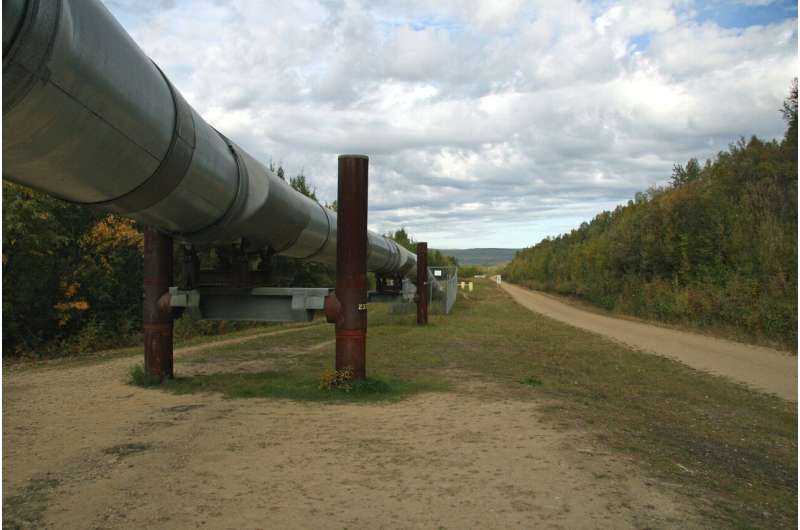This article has been reviewed according to Science X's editorial process and policies. Editors have highlighted the following attributes while ensuring the content's credibility:
fact-checked
trusted source
proofread
Monitoring of natural gas compressor stations underestimates health risks to nearby communities, says study

There are more than 1,200 compressor stations along the roughly 3.2 billion kilometers (2 million miles) of natural gas pipeline in the United States. Monitoring and enforcement of pollutants from these stations is falling short, a new study reports.
Compressor stations use large combustion engines to compress natural gas, maintaining pipeline pressures and a steady supply of natural gas. Natural gas combustion emits particulates and other pollutants that can impact the cardiovascular, respiratory and neurological health of people in nearby communities.
"We know that compressor stations emit a lot of air pollutants that are harmful, but there hasn't been a lot of work to study those air pollutants in-depth," said Hannah Mast, an environmental scientist at the University of Virginia and co-author of the study in GeoHealth, which publishes research investigating the intersection of human and planetary health for a sustainable future. "There's a lack of air quality monitoring at those sites and a lack of linking that to community health outcomes."
To better understand the knowledge gap between compressor pollution and community-level exposure, the researchers reviewed hundreds of papers on pollutants, placement and policies for compressor stations around the U.S. Past research identified pollutants produced by compressors, including volatile organic compounds (VOCs), nitrogen oxides, ozone and particulate matter.
These pollutants are released the entire time the compressor is in operation, but they are released in higher concentrations during scheduled maintenance of the system, when operators perform a "blowdown," which flushes the system and releases a large volume of high-pressure gas—and the pollutants it contains.
The study found that the long-term averages of pollution currently used for monitoring often do not capture the full picture of air quality because sampling schedules are set according to the lifetimes of chemicals in the atmosphere instead of coordinated with releases like blowdown events. That timing gap means the measurements do not fully capture emissions during such short-duration events.
In their review, the researchers also noted that compressor stations are often placed in vulnerable communities that already have a lower baseline of health, such as low-income populations and communities of color.
"It's an environmental justice issue," Mast said. "The baseline health of a community can really determine how they experience that exposure and the outcome of being exposed to that pollution." However, this critical baseline data of community health and pollution impacts is often missing, making the health impacts of compressor stations more difficult to determine.
Recommended actions
The researchers suggest three recommendations to protect communities from compressor pollution. First, they call for continuous air quality monitoring in nearby communities.
"The air quality monitoring needs to be done by the pipeline company, not state tax dollars doing the air quality monitoring," Mast said. "Communities shouldn't have to pay to protect themselves from pollution." She added that it is important to make monitoring data publicly available so people living in communities near compression stations can see what's happening and use that information to advocate for themselves.
Second, they call for stricter air quality standards that take release timing into account.
"A lot of times, violations are determined by a longer-term average of air pollution," Mast said. But in the case of blowdowns, those pollution pulses are averaged out. Mast said changing the frequency of monitoring, for example on a half-hour interval, would better capture high-exposure events that have a big impact on the community.
The study's closing recommendation is to assess the cumulative impacts of pollution on a community-specific basis.
"Don't just look at one compressor station in isolation," Mast said. "Look at all the other pollution-generating infrastructure and other external stressors on the community, and then relate that also to the internal stress of the community."
Mast noted that there is ample scientific evidence that compressor stations are an issue to nearby vulnerable communities, and decisionmakers and pipeline companies need to do more to protect those living nearby.
"This is an environmental justice issue that requires community-specific analysis of what's going on," Mast said.
More information: Curtis D. Davis et al, Community Health Impacts From Natural Gas Pipeline Compressor Stations, GeoHealth (2023). DOI: 10.1029/2023GH000874



















